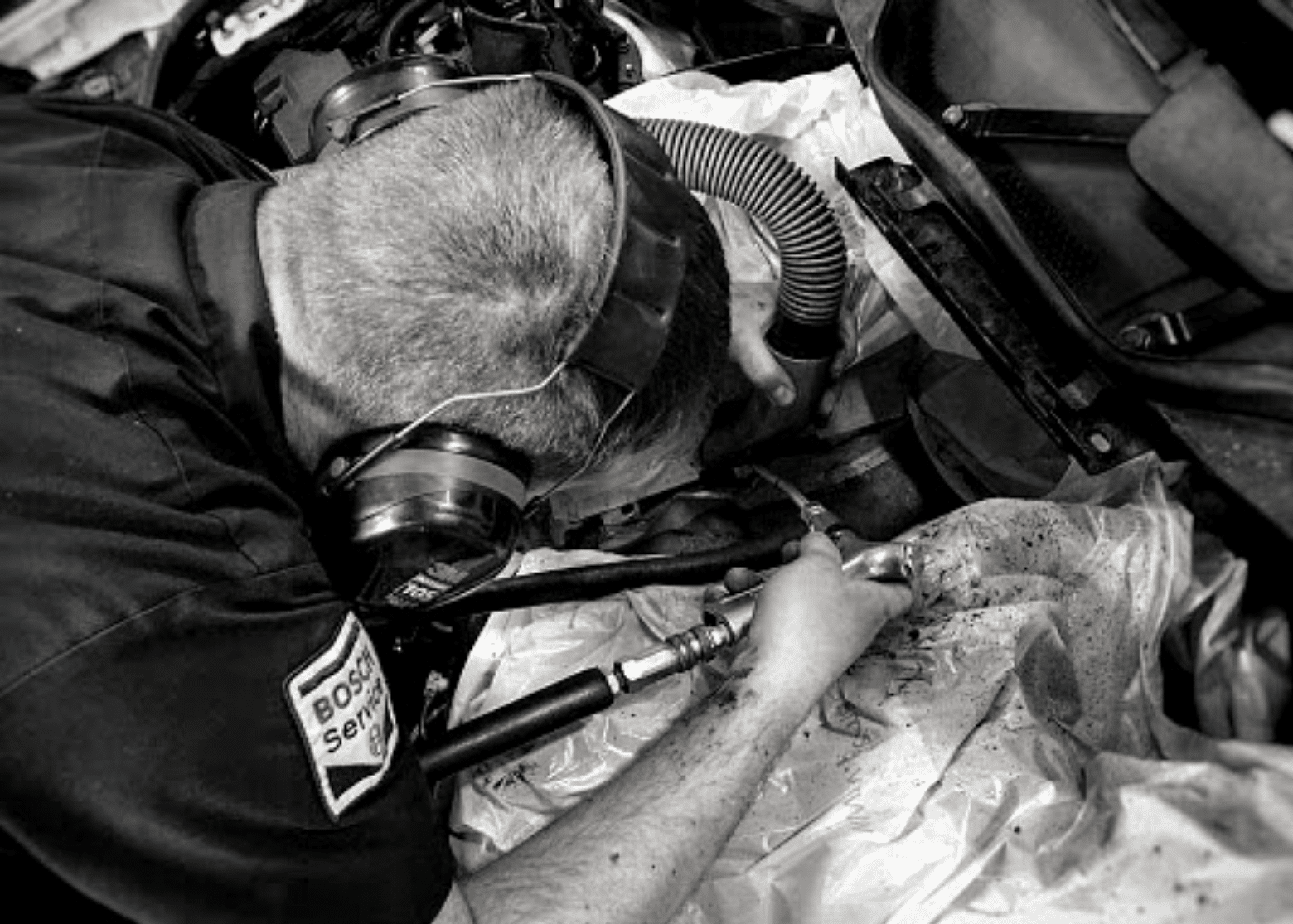Carbon Buildup Busted in Kelowna Mercedes GL350
Carbon is essential to life. Without it we would not be alive. Not in the way that we know, anyway. In some forms, however, carbon buildup can be incredibly destructive. For example, in the case of this 2011 Mercedes-Benz GL350 BlueTec 4Matic, it has caused quite the problem. The owner of this Kelowna Mercedes GL350 came to us with concerns about rough-running and hard-starting. By use of a borescope (a small camera that allows internal viewing of engine components), it was discovered that there was a carbon buildup around the cylinder ports, intake and valves. This required the intake manifold and several other engine accessory components to be removed and disassembled. We found that the carbon buildup was extensive.
Why Does This Happen?
Direct injection is to blame for excessive carbon buildup on both Gas and Diesel engines. In a direct injection engine, the fuel injector sprays directly into the combustion chamber at the exact moment combustion is needed, whereas in port fuel injection, the fuel injector is located at the intake port and fuel mixes with air and flows over the intake valve providing a cleaning effect.
The benefits of direct injection are more power, better fuel economy, and reduced emissions. This is because the fuel going directly into the combustion chamber has a cooling effect and the fuel can be atomized more efficiently, and therefore grants a higher compression ratio.
The downside to injecting directly into the chamber is that fuel, which has cleaning additives, never touches the intake valves. This results in carbon buildup forming eventually affect performance and can lead to premature engine issues.
How Can I Avoid This Happening to Me?
Motor Werke ServicesAs with anything else, preventative measures are always preferable to repairing once broken. One way that you can avoid carbon buildup is to perform regular maintenance.
- Frequent oil changes using factory approved engine oil will help protect the intake valves by ensuring the camshaft actuators and other oil pressure controlled parts are working properly.
- Making sure that you change your spark plugs at recommended intervals. A strong spark will reduce unburned fuel and therefore reduce combustion by-products sticking to a valve.
- Schedule your car in for a regular fuel injector service. This will help injectors to maintain the correct amount of fuel sprayed into the combustion chamber. Use top tier fuels (Chevron or Shell products only).
Another way to avoid carbon buildup is to update the engine management software. This adjusts valve and spark timing, which will limit the exposure of the valves to conditions that cause carbon.
What If I Already Have a Carbon Buildup?
If carbon buildup has already occurred, it will have to be cleaned out to avoid engine issues.
When we encounter a bad case of carbon buildup, we use a media blaster. Using compressed air, this machine sprays out crushed walnut shell at high speed, effectively separating the carbon buildup from whatever it is attached to. Media-blasting inside an engine is a very intricate and tedious undertaking. It is important that you seek out an experienced certified technician to complete this process. A lot of internal damage can be caused by using improper tools and blasting techniques.
Ciao, Carbon
It took 6 hours of media blasting to remove the deposits from this GL350. The intake manifolds, gaskets, and air distribution pipe all had to be replaced. The carbon buildup was considerable, and the labour time came in at over 20 hours for the completion of this repair. Not all carbon issues are this extensive, but if ignored, it will get out of hand like this one did!
If you are experiencing rough-running, misfiring, hard-starting, or poor fuel economy, especially in vehicles from the mid 2000’s and newer, contact us at Motor Werke today to check for carbon buildup. You can call us at 250 869 0269 or book an appointment!





